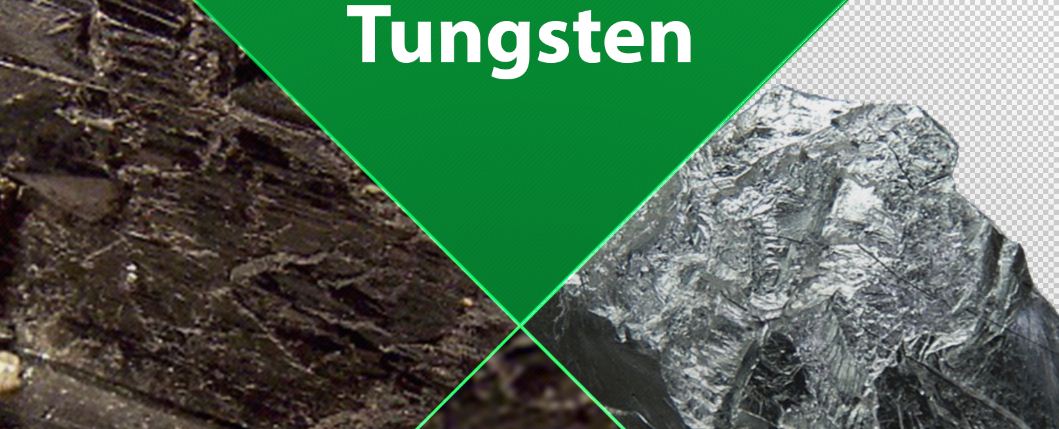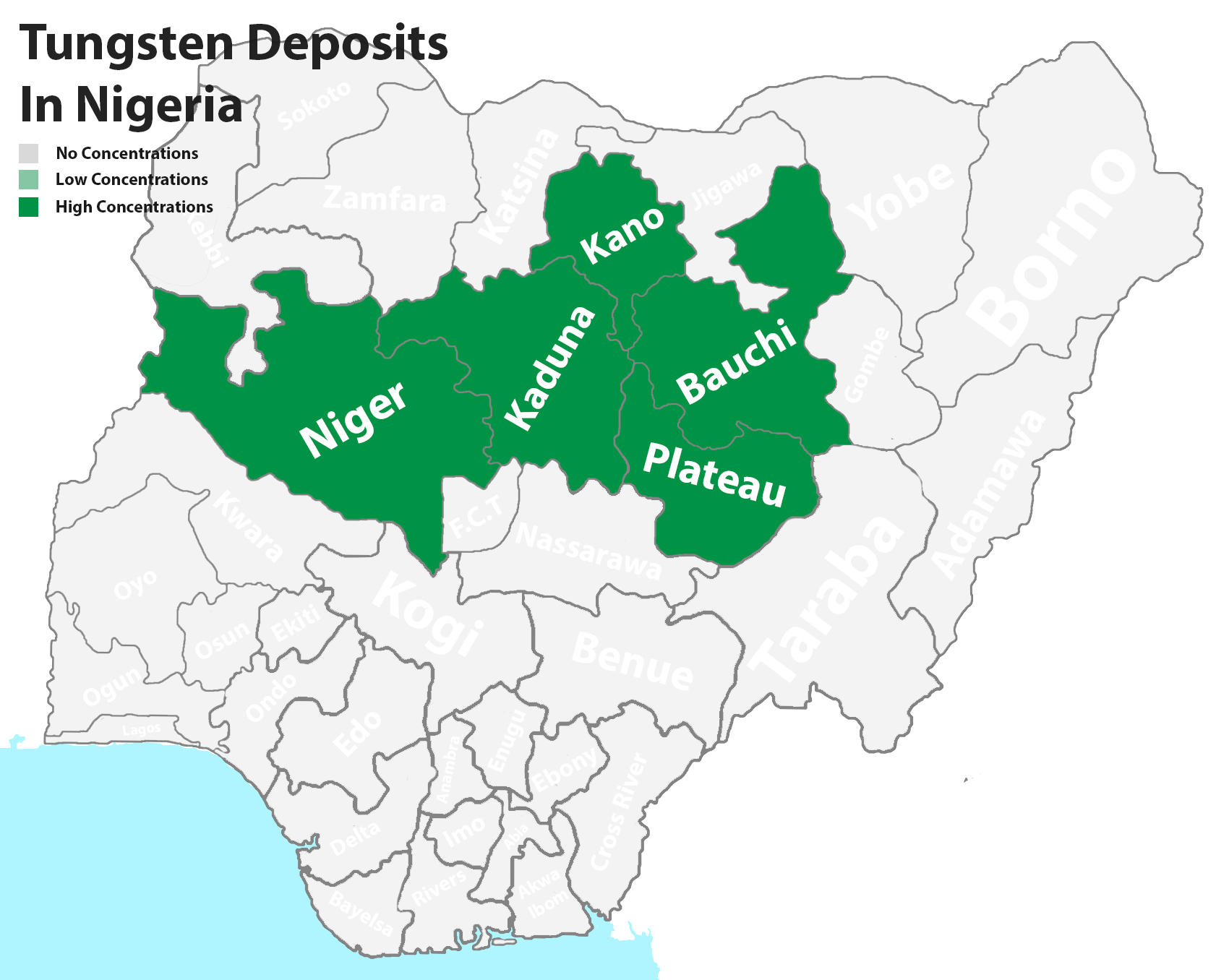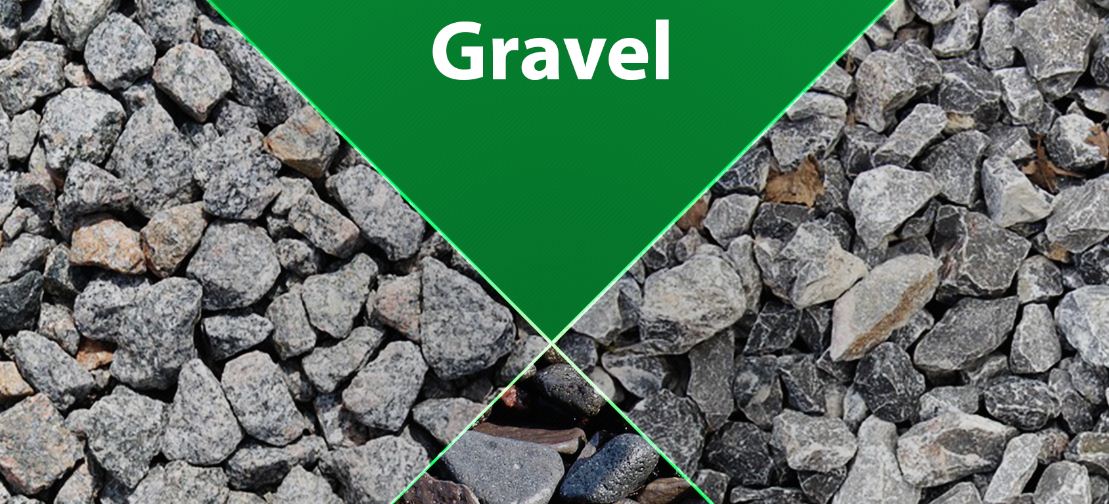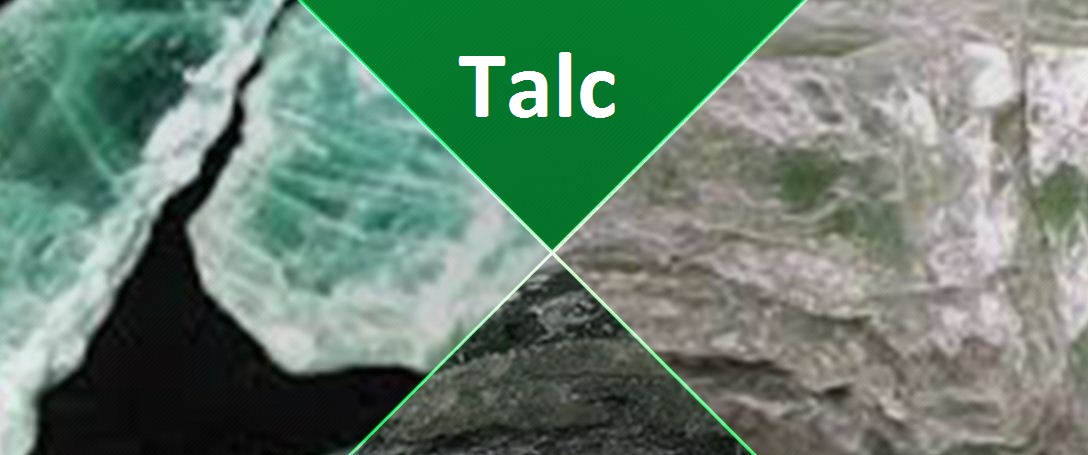Tungsten (W) Mineral Deposits In Nigeria States And Its Applications

Nigeria is one of the African countries that is richly blessed with abundant mineral resources and Tungsten is not an exception, these can be located in; Kano, Kaduna, Bauchi, Plateau, and Niger states.
The word Tungsten is believed to originate from the Swedish word “tungsten” which literally means heavy stone, it is also known as wolfram because it is one of the major deposits of Wolframite, and because of that, its chemical symbol is W and has the atomic number 74.
Tungsten is one of the rare metals in nature; it does occur in nature only in association with many (more than 20) minerals but occur in scheelite and wolframite in high deposits, wolframite is the chief ore of tungsten formed the basis for the chemical symbol W for tungsten as a chemical element.

It has the lowest vapor pressure, highest melting point, and tensile strength when compared with metals in pure form, its melting point is 3422 °C, 6192 °F.
Pure tungsten has a white shiny appearance and can be easily bent. It is hardness and brittleness to a relatively greater extent due to the amounts of carbon and oxygen present, and it mainly exists in 2 crystalline forms, namely α and β.
Tungsten can be mined using conventional underground and open-cut mining methods. The concentrate of tungsten can be determined after crushing or grinding using;
a. Ore sorting method which uses X-ray, optical, or UV in the case of scheelite.
b. Gravity methods, though both scheelite and wolframite are heavy minerals, while wolframite is not susceptible to flotation, Scheelite is.
c. Magnetic separation can also be used for wolframite but not possible for Scheelite separation.
Though there are different methods of Tungsten extraction and mining that are dependent on the mineral's physical and chemical properties such as its occurrence, depth, and more.
But basically, to extract Tungsten from Wolframite, these processes have to be followed;
- After the extraction of the ores from the mine, the wolframite is crushed to remove the tungsten mineral crystals in the ore by milling.
- The tungsten mineral crystals are then subjected to a pre-concentration stage where the air blast separation technique is used in order to increases the trace components of the mineral.
- The ore is further subjected to beneficiation through the use of pressure leaching, filtration, precipitation, and solvent extraction which is a vital separation process that will make the valuable constituents of ore to be more concentrated.
- After the ore beneficiation process, the tungsten concentrates will be around 60-75% and at this stage, it can be used directly in steel production or further processed.
- The tungsten concentrates at this stage undergo a hydrometallurgy process through pressure leaching, filtration, solvent extraction, and other suitable chemical processes in order to obtain most of the pure metals from the ore.
- And lastly, it is finally processed using the pyrometallurgy method, to purify the metals using the highest suitable temperature either through a rotary furnace or calcination. At this stage, pure tungsten can be used in a wide variety of applications.
Uses of Tungsten
- Due to its high-temperature applications and hardness, it is used in arc-welding electrodes and heating elements in high-temperature furnaces.
- It is also used for jewellery because of its hardness and wear resistance.
- Tungsten and its alloys are used in the manufacture of cemented carbides.
- Tungsten carbide is very hard and is useful in metal-working, mining, and petroleum industries.




